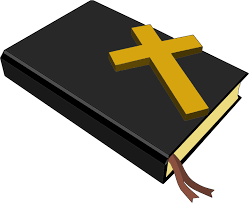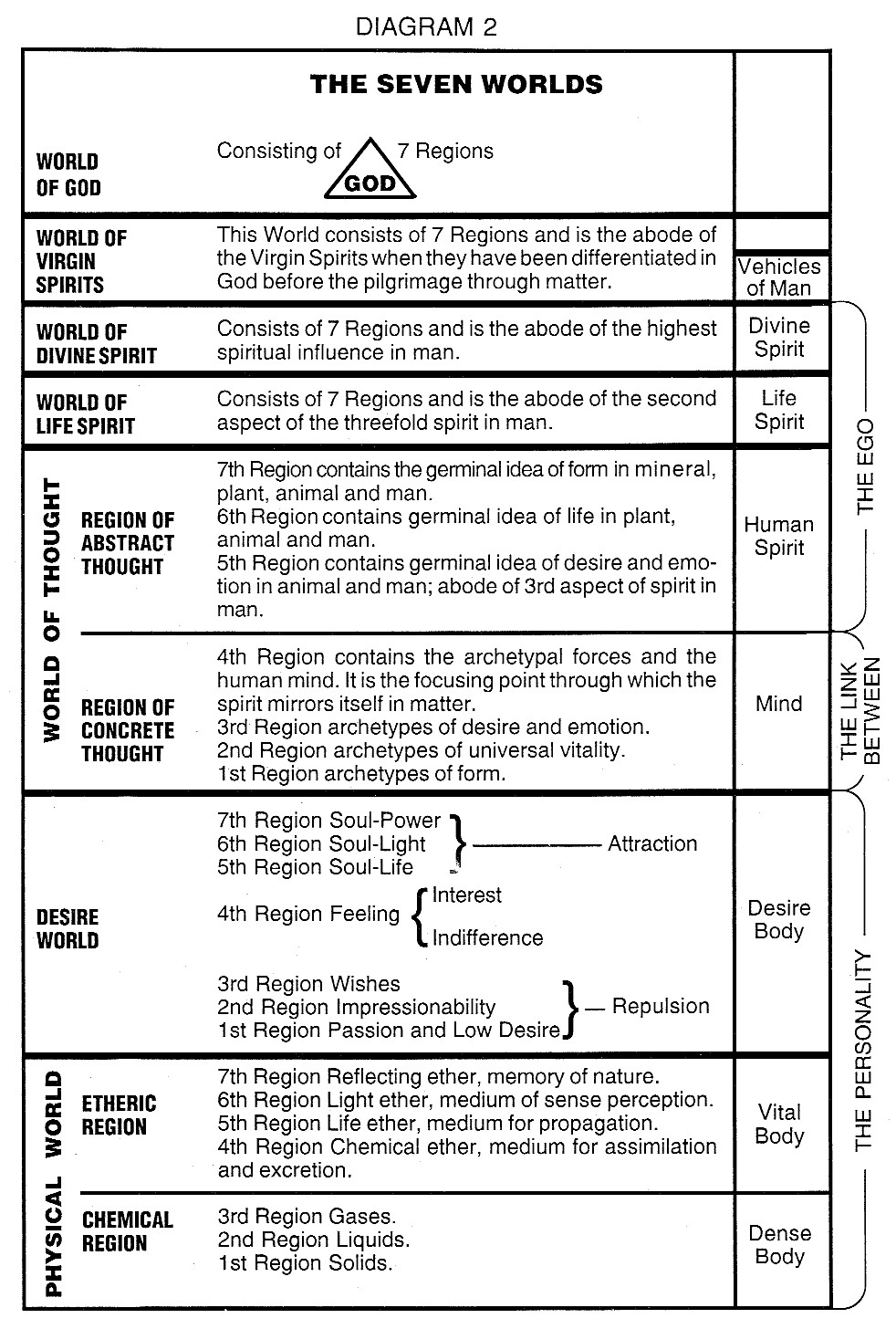
| rosicrucianU.com | ||
| Simplified Scientific Christianity |

It is evident that each of Nebuchadnezzars visions is a trial for Daniel and his friends. In the initiatory trials of the modern candidates there are also many instances of Desire World phenomena being revealed to their spiritual sight, and of their being commanded to read and interpret. Upon awakening from "clear" sleep, neophytes often see before the inner eye books, scrolls and other manuscripts bearing esoteric instruction or words of encouragement. It frequently happens that a neophyte is unable to read the messages in their entirety, as was the case with Nebuchadnezzar. But an Initiate (figured in Daniel) must and will read; he can also interpret.
Chapter four recounts another vision of the king. The "watcher" mentioned is an angelic Being — and the term watcher is truly descriptive of these Beings — whose eyes are unwinking in their heavenly lustre and seem to illumine the very soul of any upon whom they gaze. It is as if their eyes were organs of communication for they convey that silent wisdom so beautifully described by Rudolf Steiner, the eminent occultist, as "inwardly instilled speech."
Daniel 4:25,26
They shall drive thee from men, and thy dwelling shall be with the
beasts of the field, and they shall make thee to eat grass as oxen, and
they shall wet thee with the dew of heaven, and seven times shall pass
over thee, till thou know that the most High ruleth in the kingdom of
men, and giveth it to whosoever he will.
And whereas they commanded to leave the stump of the tree roots;
thy kingdom shall be sure unto thee, after that thou shalt have known
that the heavens do rule.
It has been pointed out that Scriptures are so constructed as to be susceptible of no less than seven complete interpretations, a practice common to mystic writers of all ages and nations. Similar construction is found in the works of medieval writers on esoteric matters. For example, Dante's Divine Comedy allows of three or four interpretations. This common practice of the Middle Ages is exemplified in La Roman de la Rose. Most moderns read hastily and as a rule do not enjoy literature that requires careful thought in order to be understood. This superficiality is due in part to the rush and speed of our high-power age. Its cure, however, lies in its very source; for the newly released power which has sped up our tempo of living will also provide added leisure when civilization is brought under wise economic and social planning. Then the ancient methods of illumined seer-writers will once more be employed and we shall have time to enjoy reading a beautiful masterpiece many times over, ever discovering new meanings therein.
Therefore, several interpretations may be sought for the visions recorded in the Book of Daniel. If that meaning which pertains to Initiation is emphasized in this New Age Bible Interpretation, it in no way invalidates other readings including the historical.
Onee more we see that Nebuchadnezzar appeals to Daniel as to one familiar with the Chaldean Mvsteries: "But at the last Daniel came before me ... in whom is the spirit of the holy gods: and before him I told the dream, saying, O Belteshazzar, master of the magicians, because I know that the spirit of the holy gods is in thee, and no secret troubleth thee, tell me the visions of my dreams." (Daniel 4:8)
Daniel interprets the dream for the king: "The tree that thou sawest ... It is thou, O king, that art grown and become strong ... (but) they shall drive thee from men, and thy dwelling shall be with the beasts of the field, and they shall make thee to eat grass as oxen, and they shall wet thee with the dew of heaven, and seven times shall pass over thee." That is, seven years (seven times of the Sun's passage around the circle of the Zodiac) of powerlessness and suffering was the king to know; yet "thy kingdom shall be sure unto thee." This description of his condition would indicate a time of mental aberration for "at the end of the days I Nebuchadnezzar lifted up mine eyes unto heaven and mine understanding returned unto me . . . At the same time my reason returned unto me ... and I was established in my kingdom, and excellent majesty was added unto me."
At this point the historian need seek for no other meaning, but for the esotericist there is a most profound significance. For an illumined candidate the "seven times" period of Nebuchadnezzar's suffering represents a time of testing and liquidating karma, thus freeing his soul for the conquest of spiritual worlds. Most neophytes will bear witness to the fact that the first seven years of their endeavors on the Path were a time when problems of their personal lives came to a point of crisis and they were tempted from every angle to abandon the spiritual life. Those who stand firm come to the glad hour when they can say in the words of the Chaldean king-neophyte: "My reason returned unto me, and I was established in my kingdom, and excellent majesty was added to me."
Daniel, more than any other prophet of exillic or post-exillic times, was the messenger of Christianity. He has been called the Beloved Man, even as John was the Beloved Disciple. He beheld the Christ Archangel before His earthly incarnation and indited a revelation of Him, just as John the Divine, on the Isle of Patmos, wrote after the Master's incarnation. John's Revelation is in every sense a sequel to Daniel's. Esotericists find a mystic tie between these two, so clear that they know the Book of Revelation cannot be understood without its being studied with the Book of Daniel. Orthodox scholars claim that references to Old Testament prophecies and verses are given in the New Testament to supply authority for the latter. Such is not the true reason for those references. Their true purpose is to point out to a student that at such and such a place in the Old Testament added information will be found on the subject. In the Gospel of Matthew, when the Christ speaks of the prophet Daniel it is certainly not as an appeal to authority. It is a hint that certain Mysteries will be better understood if studied in connection with Daniel's revelations.
In the matter of the Holy Tree: both the cyprus (or fir) tree and the palm tree were used by Chaldeans and Hebrews to symbolize the Tree of Life, and the Tree of Life is always symbolic of the created universe — not as a machine but as a living organism, the outward embodiment of divine Creative Intelligence. In Astrology; Its History and Significance, Ellen McCaffery traces the origin of the kabbalistic Tree of Life to the genealogical tree of the God Bel. Daniel was given a Babylonian name wherein the name of this God figured, Belteshazzar, and he was evidently educated in the school of the Temple of Bel. Conspicuous in all Babylonian architectural decorations were conventionalized ornaments derived from the Tree of Life and used as borders and motifs, while the Tree itself was represented in various forms. In the Hebrew Temple a branched candlestick symbolized the cosmic Tree, as josephus has shown.
The Tree of Life occupies a prominent place in the symbology of all religions, although the species varies: the Yggdrasil or World Ash of Scandinavia; the oak tree of Zeus; the cyprus or palm of Chaldea; the sycamore of Egypt; and so forth. The Tree is usually represented as extending from heaven to bell, mankind living beneath its branches.
"As above, so below." Man, made in the image of the Gods, is also a "tree." Catacomb pictures dating from post-Apostolic times figured the Christ as a Vine, among the branches of which souls of the righteous flit like birds of gay plumage. The Tree was the origin of the ladder symbol as seen by Jacob in his initiatory experience. Reaching from heaven to earth, a tree is clearly a ladder by which the soul of man may climb from earth to heaven; or, as a winged creature, he can fly from branch to branch thereof. There is also the previously mentioned Indian tradition to the effect that at the center of the earth stands the Tree of the Sun. At sunrise it shoots forth from the earth; then, as the Sun ascends toward the zenith, it grows up into the air until its topmost branches reach the Sun. At noonday it stands high in the heavens but diminishes with the declining day iintil at the set of the Sun it sinks back into the earth. This tradition pertains to the etheric currents of our globe as they meet and mingle with the Sun's etheric emanations.
However, the microcosmic "tree" was brought low in the "fall of man." In this instance Nebuchadnezzar typifies the masses. His experience is common to all. The law of spirit commands that the proud shall be abased and the humble lifted up. Through the Fall, egos were wedded to desire. The heart of man became the heart of a beast "until seven times pass over him," seven cosmic cycles which, in the microcosmic sense, refer especially to the seven subraces of the post-Atlantean Fifth Root Race The Christ was to come in the post-Atlantean, Fifth Epoch. Then man would be restored to his original (Edenic) understanding, after a cosmic period of worldwide agony.
Spiritual awakening of the masses is the Great Work of the present Day of Manifestation. The end of this Epoch is described by Nebuchadnezzar: "and at the end of the days I Nebuchadnezzar lifted up mine eyes unto heaven, and mine understanding returned to me, and I blessed the most High, and I praised and honored him that liveth forever, whose dominion is an everlasting dominion, and his kingdom is from generation to generation . . . I Nebuchadnezzar praise and extol and honor the King of heaven, all whose works are truth, and his ways judgment: and those that walk in pride he is able to abase."
— Corinne Heline

|

|

|
|
|
Contemporary Mystic Christianity |
|
|
This web page has been edited and/or excerpted from reference material, has been modified from its original version, and is in conformance with the web host's Members Terms & Conditions. This website is offered to the public by students of The Rosicrucian Teachings, and has no official affiliation with any organization. | Mobile Version | |
|